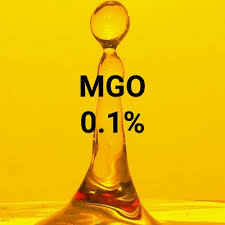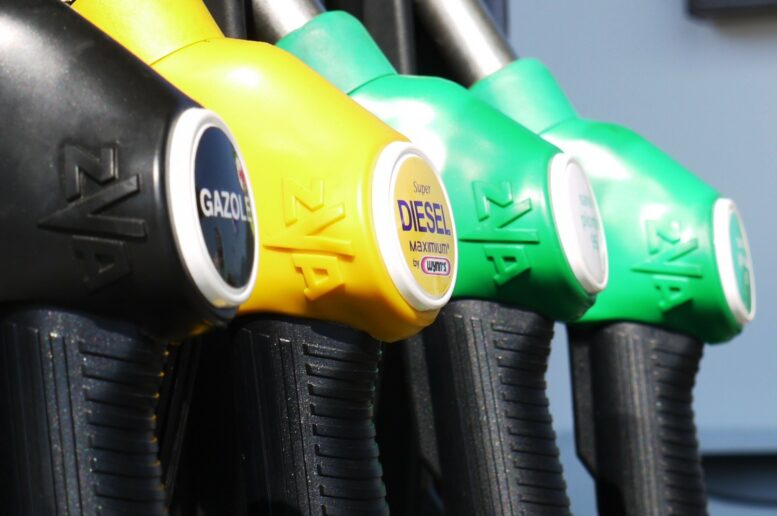The mega ships burn tons of fuel everyday to propel their engines and deliver their massive loads to different ports. Ship engines have been known to use low-grade fuel oil to lower the ship’s operating costs, since the share of fuel cost can reach between 30-50% of total operating costs of a ship. It is not a simple decision to use low-grade fuel oil such as Heavy Fuel Oil (HFO) either because the ship will not be allowed in regulated Emission Control Areas (ECAs). Thus, refineries are producing lesser of these residual HFO fuels yearly starting at the beginning of 2015.
The shipping industry is one of the top subsectors of the transportation sector to follow the stringent IMO environmental laws in moving massive cargo worldwide. Eliminating air pollution has been the top agenda of the Marine Environmental Protection Committee (MEPC), and hence several regulations have been enforced to curtail the harmful emissions from ships such as CO2, SOx and NOx. Both NOx and SOx are combustion products that are emitted into the environment in the form of smoke.
With the ever-changing technology on ships, the fuel used to run marine engines and designs may also need to change just as rapidly to optimize efficiency.
There are marine fuels that are seriously being considered to replace Heavy Fuel Oil (HFO), the dirtiest and most-polluting residual fuel for ships. These are Liquefied Natural Gas (LNG), Marine Gas Oil (MGO), Marine Diesel Oil (MDO), Ammonia (NH3), Methanol (CH3OH), Fuel Cell Batteries, Hydrogen (H), Liquefied Petroleum Gas (LPG), and Biofuels for the shipping industry.
LNG and MGO are the most preferred and prominently used fuels in place of HFO because they are excellent fuels, and have lower carbon dioxide (CO2), and negligible nitrogen oxide (NOx) sulphur oxide (SOx) emissions than HFO, respectively.
Ammonia, Methanol, Hydrogen, Fuel Cell Batteries, LPG, and Biofuel are considered environmentally cleaner fuels than HFO, but still need more engineering tests for reliability in long-haul shipping. Hydrogen and LPG are clean. Ammonia is a low carbon fuel, but has high NOx emissions, and low flammability. Methanol will soon be carbon-free and is 2020 compliant with Sox, NOx, and particulate matter (PM) emissions, but has a very low flashpoint of 12°C.
Distillates. Marine Gas Oil or MGO, is a high quality marine fuel that consists exclusively of distillates. Distillates are all those components of crude oil that evaporate during distillation and are then condensed from gas into liquid.
MGO usually consists of a blend of various distillates. While MGO is made only from distillates, MDO is a distillate blended with HFO that may contain very small amounts of black refinery feed stock. When residual fuel oil is blended with distillates, the blend is called Intermediate Fuel Oil (IFO).
Density. MGO has a higher density than MDO. The maximum density of MGO is 890 kg/m3 at 15°C, but closer to 860 kg/m3 at 15°C. In contrast, MDO has a maximum density of 900 kg/cm3 at 15°C. The density of fuel oil indicates the ignition quality of a fuel and is also used for calculating the amount of fuel oil quantity delivered during the bunkering procedure.
Flashpoint. MGO has inherently a transparent to light yellowish brownish color, but is colorized red. If a marine fuel like heating oil is used in inland waterway shipping, it is colorized with a yellow dye. These measures are to enable the detection of the type of use, and protect against the misuse of low-taxed and relatively cheap heating oil, which is often the same fuel used in inland shipping.
MGO and standard heating oil largely share the same properties. Thus, heating oil is sometimes supplied as marine fuel when there are shortages of marine fuel. MGO has a flashpoint between 65-850C. Thus, the flashpoint of the relabeled heating oil to replace MGO ship fuel must be a minimum of 60°C or higher. MDO has a flashpoint of 61°C. But both MGO and MDO have a minimum flashpoint of 60°C.
The temperature at which the vapor of the heated fuel ignites is the fuel’s flashpoint. This is done under specified test conditions, using a test flame. Per SOLAS and IMO, the flashpoint for all heavy fuels to be used onboard vessels is set at a minimum of 60°C. In addition, the engine technology or any installed exhaust filter systems on the ship must be compatible with the low sulfur content of heating oil. However, the new fuels have a much lower flashpoint (<55°C) plus lower sulphur content, the combination of which may result in a collision with IMO safety regulations.
Viscosity. The viscosity of MGO is lower than MDO or HFO, and for operation in two-stroke marine diesel engines, MGO may need to be cooled to stay at specified engine design viscosity levels to prevent fuel pump wear. Because MGO is based on the lighter distillates, it results in a low viscosity, and thus can easily be pumped into the engine at temperatures of about 20°C, unlike MDO that has a large proportion of HFO, and thus more difficult to be pumped into engines.
Viscosity is the resistance within the fluid fuel that acts against the flow. Kinematic viscosity represents the dynamic viscosity of a fluid per unit of density. The viscosity of fuel is a highly significant parameter since it is used to determine the ease of atomization and convenience to pump fuel within the system.

MGO’s kinematic viscosity is 5-7 cSt (centistoke) at 400C. MDO’s kinematic viscosity is about 8 – 11 cSt at 400C. IFO 180 and IFO 380 have viscosities of 180 mm²/s and 380 mm²/s, respectively. [mm²/s= square millimeter per second]
The kinematic viscosity in centistoke (cSt) at 40°C is the basis for the ISO 3448 kinematic viscosity grading system, making it the international standard.
Cetane Index. MGO has a minimum cetane index of 40 while MDO has a minimum cetane index of 35. The higher the cetane index, the higher the flammability. The lower the cetane index, the lower the flammability, the longer the burn lag.
Sulphur Content. MGO is also produced with varying degrees of sulfur, though its maximum permissible sulfur content lies below that of HFO. MGO is considered an ultra low sulfur fuel oil (ULSFO). ULSFO-MGO, having sulphur content of less than 0.1% means it can be used in Emission Control Areas (ECAs). In contrast, MDO has a sulphur content of 2%; and IFO would follow HFO’s sulphur content requirement of 0.5% m/m (mass by mass) per MARPOL starting 1-January-2020. The ECAs impose a sulfur emissions limit corresponding to that of ULSFO–MGO. Alternatively, this limit can be achieved with the use of filter systems or scrubbers, but they are so expensive.
Sulphur content in fuel is one of the main factors for sulphur oxide (SO2) pollution from ships – a pollutant, which is under major scrutiny by IMO. Compared to marine fuels with either a higher or lower proportion of HFO, emissions from MGO contain significantly less particulate matter and soot. And, as the sulfur content of distillate fuel can easily be kept very low, refineries are optimizing their production processes to produce less and less residual fuel HFO.
Pricing. MGO has been touted as the most expensive fuel compared to all the other fuel options. However, this is not necessarily true anymore because Methanol has entered the fray and even with its price drop, it is now more expensive than MGO. Also, the deep plunge in price of LNG and TTF (see table) is a signal to industry insiders to expect that MGO might be used more in the years ahead, and engine technology in shipping will adapt to MGO as a result. Although the price of MGO and MDO fuels have dropped by 54% compared with the 87% drop in LNG prices, they are significantly still much more expensive than LNG, IFO, TTF, and Crude Oil. Thus, the global shift to MGO as the marine fuel of the future is not likely to happen anytime soon in the near to medium term. LNG will likely continue to be the preferred fuel over MGO mainly for reasons of cost efficiency.
However, the world seeks for a marine fuel for the future that is a super clean zero-emission fuel. Meaning, cleaner than LNG, which has CO2 and methane emissions. And MGO, being a pure distillate and an excellent marine fuel, just might fill the top spot for being carbon free, with negligible NOx and SOx emissions.
Specifically, here are comparative fuel prices of some fuel types in U.S. Dollars per Million Metric British Thermal Unit (US$/mmBTU):

Notes:
IFO 380 = Intermediary Fuel Oil with some HFO, is synonymous to MDO.
TTF = Title Transfer Facility is a virtual trading point for natural gas.
In the 2018 Whitepaper by DNV-GL titled, “Alternative fuels and technologies for greener shipping,” it stated: “The IMO decision to limit the sulphur content of ship fuel from 1-January-2020 to a maximum of 0.5% worldwide, and the recently adopted resolution to reduce greenhouse gas (GHG) emissions by 50% by 2050, will change the future mix of ship fuels dramatically. The combined amount of heavy fuel oil (HFO) and marine gas oil (MGO) consumed by ships accounts for no more than 25% of total global diesel fuel and petrol production. This is roughly equivalent to the amount of energy consumed using liquefied natural gas (LNG), which stands at 24%; however, LNG represents only a small portion (about 10%) of the overall gas market.”
Whether MGO will fill a short, medium, or long-term spot if and when LNG phases out is subject to speculation. What is certain is if the world wants to address Climate Change, the shift must be done much faster than the current pace, from the use of low emission gases (LNG, MGO, MDO etc) as marine fuel to zero emission renewable energy sources.
References:
- Marquard & Bahls. Marine Gas Oil. https://www.marquard-bahls.com/en/news-info/glossary/detail/term/marine-gasoil-mgo.html.
- DNV-GL. Alternative fuels and technologies for greener shipping (09-October-2018).
- MGO Image courtesy of Gallon Fuel, Greece.
